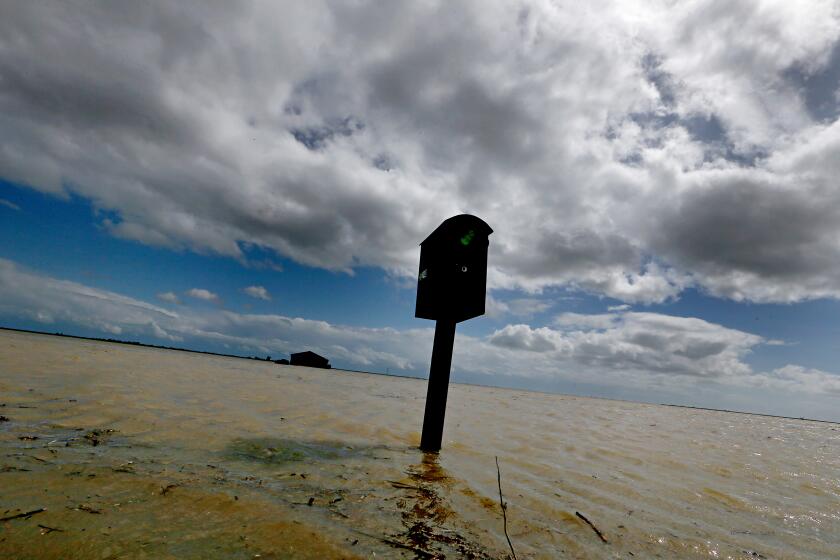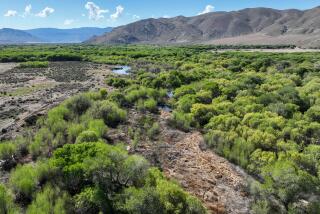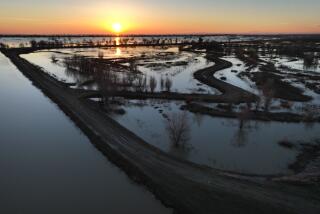
- Share via
WILLIAMS, Calif. — Breathing in the rain-scrubbed air and absorbing the splendor of Topanga Creek, as it danced and pooled before her eyes, Rosi Dagit had to smile.
“This is like heaven for a steelhead,” said Dagit, a senior biologist with the Resource Conservation District of the Santa Monica Mountains. “If I was a steelhead, this is where I would lay my eggs.”
This winter’s strong and persistent rains have revived a creek that, in recent years amid a punishing drought, had been reduced to a series of ponds and puddles. The much-needed water greatly enhances the prospects of reproduction for the endangered southern steelhead. And it has revived habitat for myriad other species in the Topanga Creek watershed, from a tiny minnow to frogs and newts to the coyotes and mountain lions that roam the canyon.
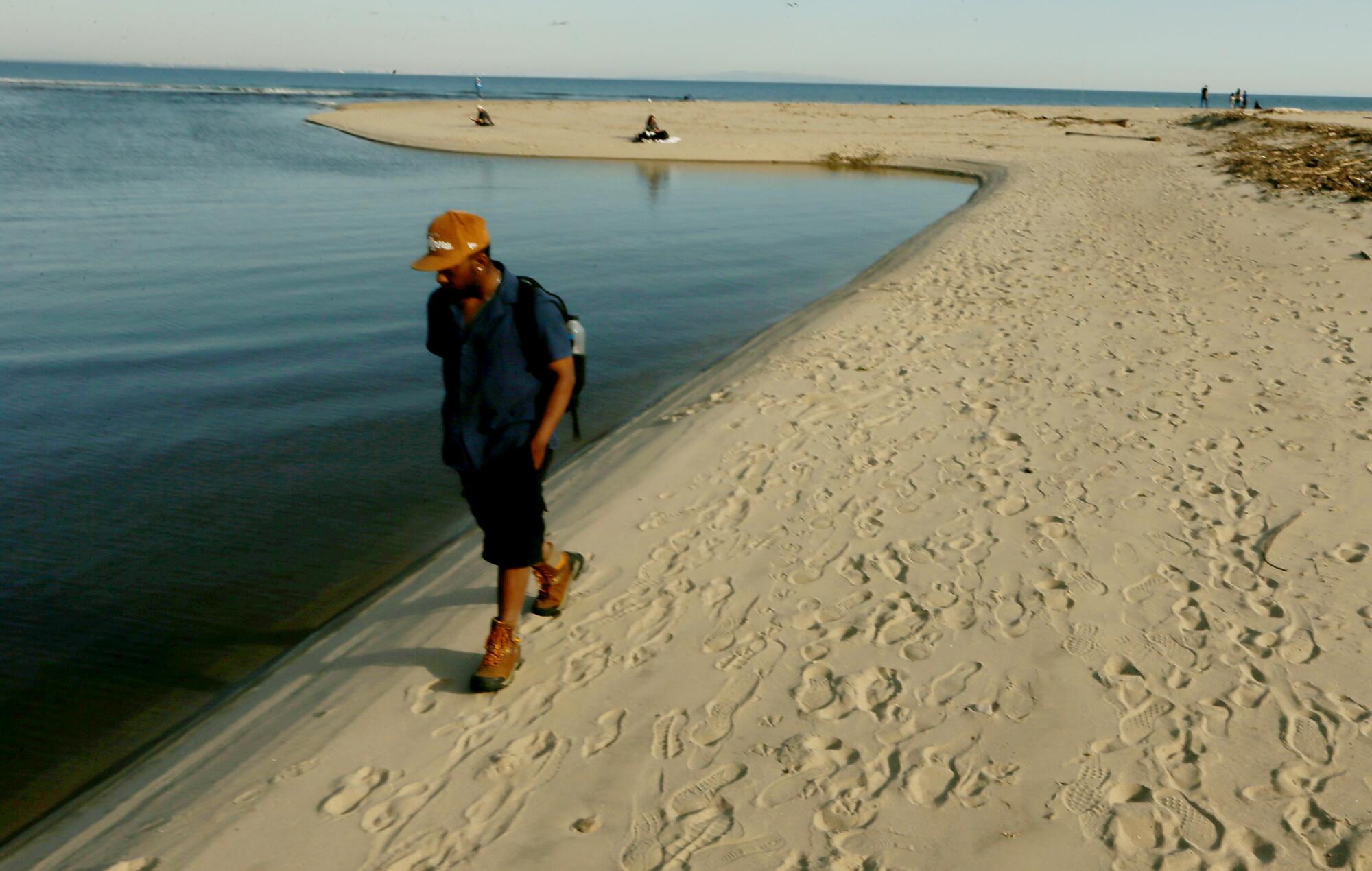
Humans share in the watery bounty, because the rocks and sediment washing down Topanga Creek replenish an eroding beach and bolster a beloved surfing spot. Topanga regulars say the newly configured ocean bed has reshaped waves, even slightly increasing the chance they might catch a tasty little “barrel.”
Dagit uses words like “fabulous” and “spectacular” to describe the scenes of rebirth and replenishment along watersheds that feed into Santa Monica Bay. It’s a sentiment of wonder and relief repeated around much of California in recent weeks, as the wettest winter in recent memory has given way to a damp spring.
The precipitation that has all but ended the state’s three-year drought has, without doubt, brought devastation to some areas of the state, resulting in catastrophic flooding, mudslides and snowfall that cost some Californians their homes, their jobs, even their lives. But in many corners of the state that have avoided calamity, super-wet 2023 has been a boon.
The state’s largest reservoirs are filled to near capacity. Groundwater has begun to recharge after years of overpumping. Hillsides have exploded with a profusion of California poppies, sky-blue lupine and other wildflowers. Moisture-starved trees, including the state’s signature pines and mighty oaks, appear on the rebound.
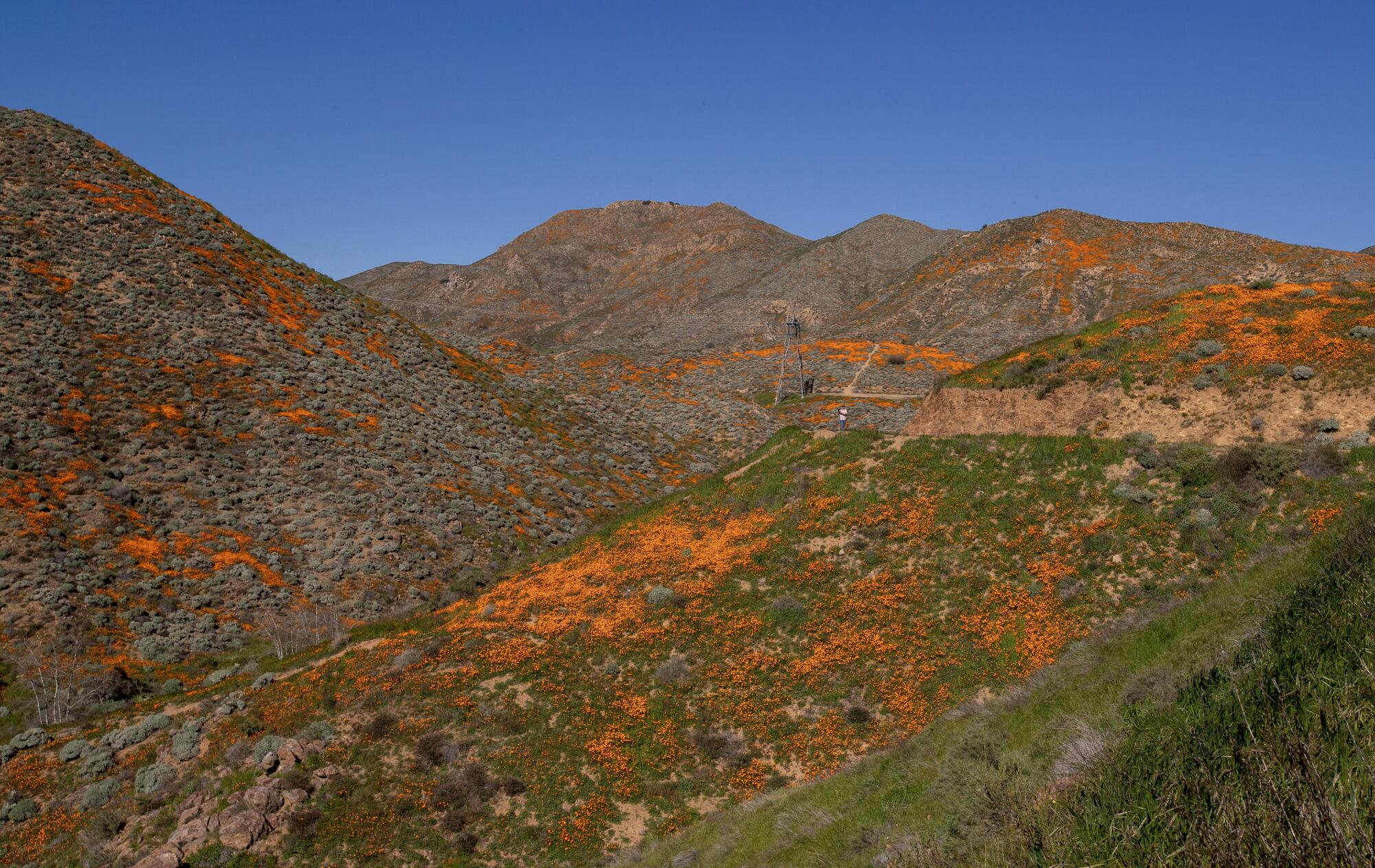
And the air in Southern California doesn’t just feel cleaner, it is cleaner: The first 86 days of the year have produced less pollution than any time since fine particulate monitoring began in 1999, said the South Coast Air Quality Management District.
“I just had a sense of relief — absolute relief and joy — that all the trees in this state would be watered,” said Janet Cobb, executive officer of the California Wildlife Foundation/California Oaks. “Especially in rural areas, where the water table has been so depleted, they have finally had a big drink!”
For the record:
8:09 p.m. April 1, 2023An earlier version of this story said nearly three dozen vertebrate species rely on oak habitats. That figure represents endangered, threatened or candidate species. Overall, more than 300 native vertebrate species rely on oak habitats.
And where oaks are happy, so is other wildlife. Research has found that more than two-thirds of California’s drinking water supply is stored in oak woodlands. And more than 300 native California vertebrate species rely on oak habitats, many feeding on acorns dropped by the trees.
A late-March walk in the hills east of Berkeley revealed oaks, only recently a steely gray, have turned sharply green; even the lichen covering their bark appeared refreshed in the morning mist.
Cobb rhapsodized about the “clearing of the air” and the acidic smell of damp oaks. “It makes a wonderful fragrance. It’s something you can’t replicate,” said Cobb, whose organization focuses on preserving oak woodlands. “They make a significant contribution to our way of being. It’s soul-enriching.”
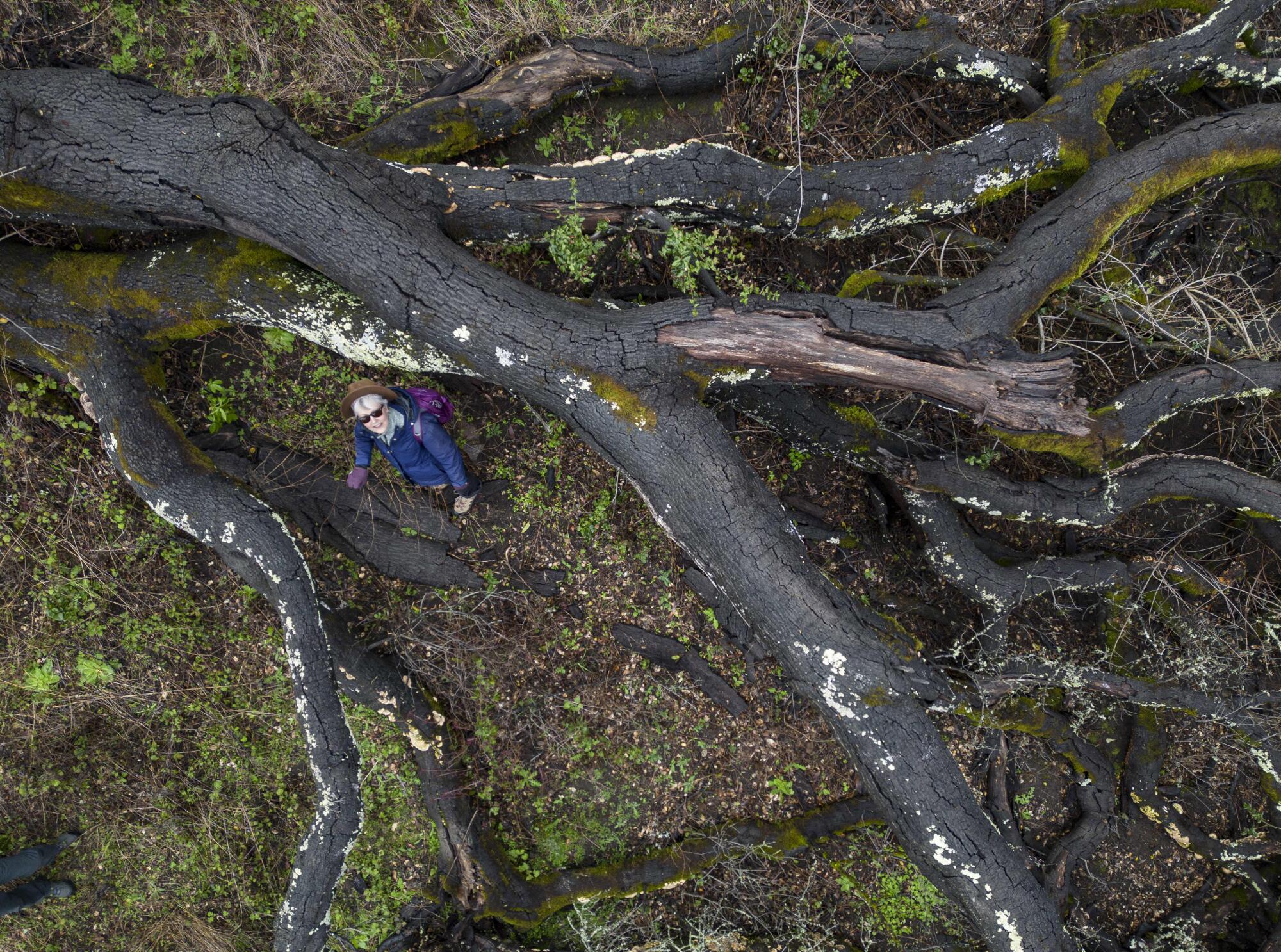
The southern steelhead trout that Dagit has worked for decades to bolster is not the only fish benefiting from this year’s repeated rains. The runoff has delivered a massive load of plants and other nutrients to creeks, rivers and lakes. It has also eased the watery treks to and from spawning grounds.
In Lake County, just north of the San Francisco Bay Area, water had been so sparse in mammoth Clear Lake that the population of hitch — an elongated, silvery minnow that once served as a primary food source for the Pomo tribe, as well as area fish and wildlife — had dwindled to dangerously low levels.
Tributaries into what is the largest natural lake in California ran so dry last summer that state Fish and Wildlife officials rescued several hundred hitch that became stranded in ponds above the lake. An annual summer survey of Clear Lake, which normally records hundreds of hitch, netted just four adults and two juveniles last summer, said Luis Santana, a fisheries biologist with the Pomo tribe’s Robinson Rancheria. But following the rains, hitch can again be seen spawning in Clear Lake creeks.
“These storms do bring water to the lake and to the creeks, and that is a very good thing,” Santana said.
The path for spawning salmon also will be eased by the surfeit of water.
“When we’re in drought, it makes it very difficult for fish to move upstream and also for juvenile salmon trying to get back to the ocean,” said Ted Grantham, a freshwater ecologist and hydrologist with UC Berkeley’s Department of Environmental Science, Policy and Management. “All this water should smooth their way.”
High rivers have also created more overflows into natural and human-made floodplains. The water soaks up nutrients, enriching the waterways. “That creates perfect conditions for a lot of wildlife, including for fish growth,” Grantham said. “Salmon can get fat before moving out to the ocean and that means they are much healthier and have a better chance for survival.”
“I do feel a sense of relief,” he added. “These ecosystems are adaptive and attuned to these sort of events. They have regenerative properties.”
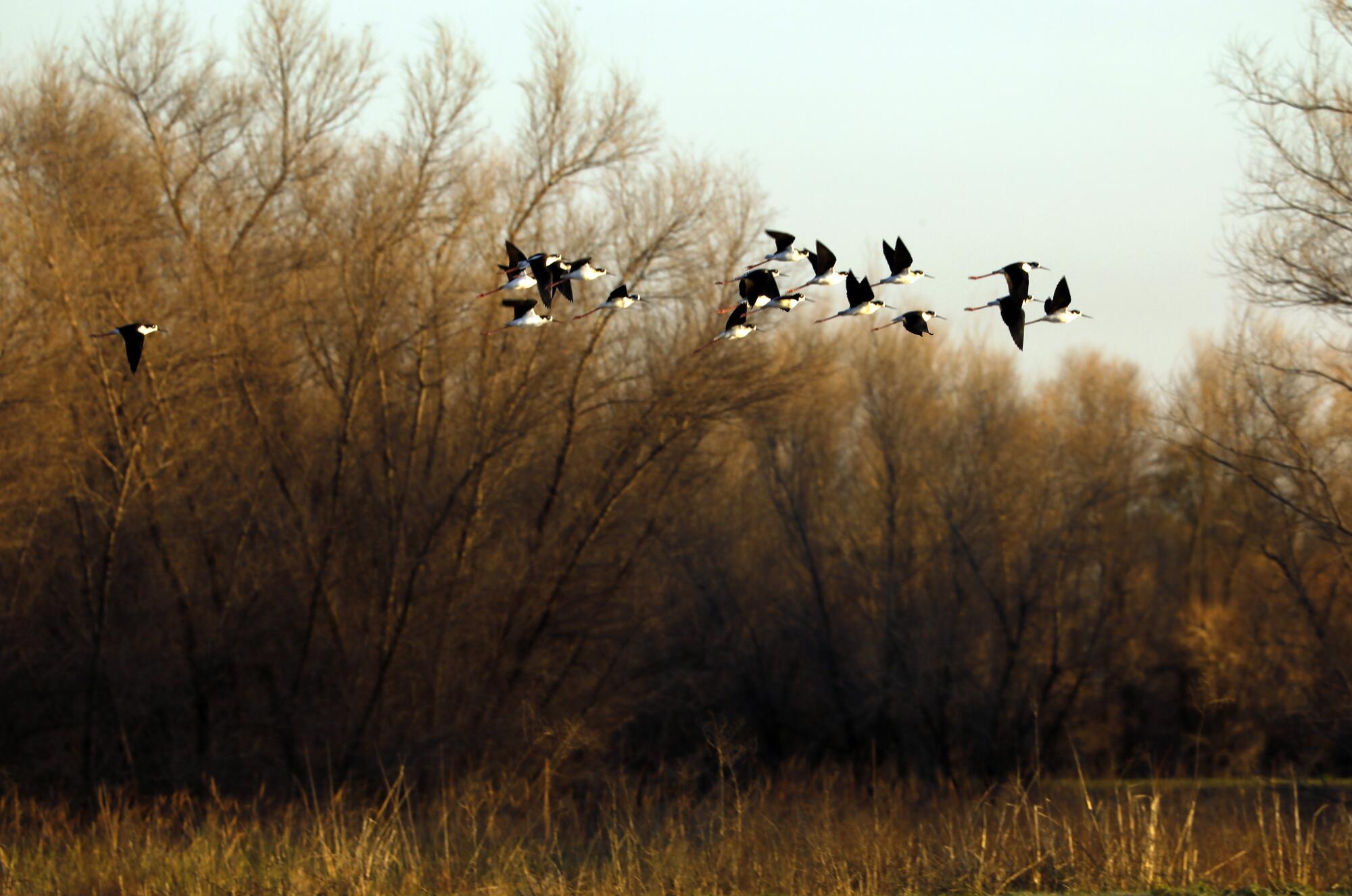
Migratory geese, ducks and other birds who ply the Pacific Flyway between Canada and points south are sharing in the reprieve. The drought had substantially reduced wetland acres along the flyway in recent years. Biologists and hunters reported thin and malnourished birds along the crucial north-south migratory route.
But already this year, the complex of wetlands along the Sacramento River National Wildlife Refuge has been promised a full allocation of water from state reservoirs. And 100,000 acres of surrounding farmland are expected to resume rice cultivation, adding immensely to the forage for migrating birds.
The additional water will allow birds to spread out along the flyway, reducing the spread of avian influenza and cholera, said Craig Isola, deputy project leader in the wildlife refuge complex. More vegetation along the wetlands means better nesting for mallards, northern harrier hawks and other species.
“We are able to put more fresh, oxygenated water through the wetlands and that just means a healthier ecosystem, all around,” said Isola, pointing out a bald eagle preening atop a cottonwood tree.
For farmers in the Sacramento Valley, the Central Valley’s largely rural northern half, the wait for sufficient crop water seemed endless. In Glenn and Colusa counties, standard cultivation of about 100,000 acres of rice fell to just 1,000 acres last year.
“I never thought we would see a day where we had essentially zero rice,” said Fritz Durst, a sixth-generation grain farmer in the valley. “We got a little bit of water, but it wasn’t a reliable enough source to make an investment in the crop.”
Fellow farmer Don Bransford concurred: “It wasn’t a fire, like you had up in Paradise, or it wasn’t a flood. It was an invisible disaster, and the only real visual was bare ground.”

When the first storms of 2023 inundated other parts of the state, the Sacramento Valley got much less moisture. Shasta Lake, the state’s largest reservoir, remained well below capacity. “We thought, ‘Oh no, not again,’“ said Lewis Bair, general manager of an irrigation and flood control district serving Colusa and Yolo counties.
Then, as one storm piled on another, “luckily, everything changed,” Bair said.
Jerry Cleek, a nut farmer whose family has been in the region since the 1860s, said: “The ground is getting saturated, the reservoirs are filling up and in terms of the water, we haven’t had any damage to speak of. It’s a good feeling.”
As historic storms fill once-dry Tulare Lake and submerge prime California farmland, tensions are building over how to handle the swiftly rising floodwaters.
Back at Topanga, nearly 500 miles to the south, Dagit and other ecologists have big plans, including reconstruction of a Pacific Coast Highway bridge to give Topanga Creek an easier path to the sea. She called the steelhead a “Field of Dreams” creature: build a more accessible waterway and they will come.
“They’re really a keystone species,” Dagit said. “So if we make it good for steelhead, we make it good for everything else that needs to live in and around the creek, and we make good water quality for all those people going to the beach.”
More to Read
Sign up for Essential California
The most important California stories and recommendations in your inbox every morning.
You may occasionally receive promotional content from the Los Angeles Times.

